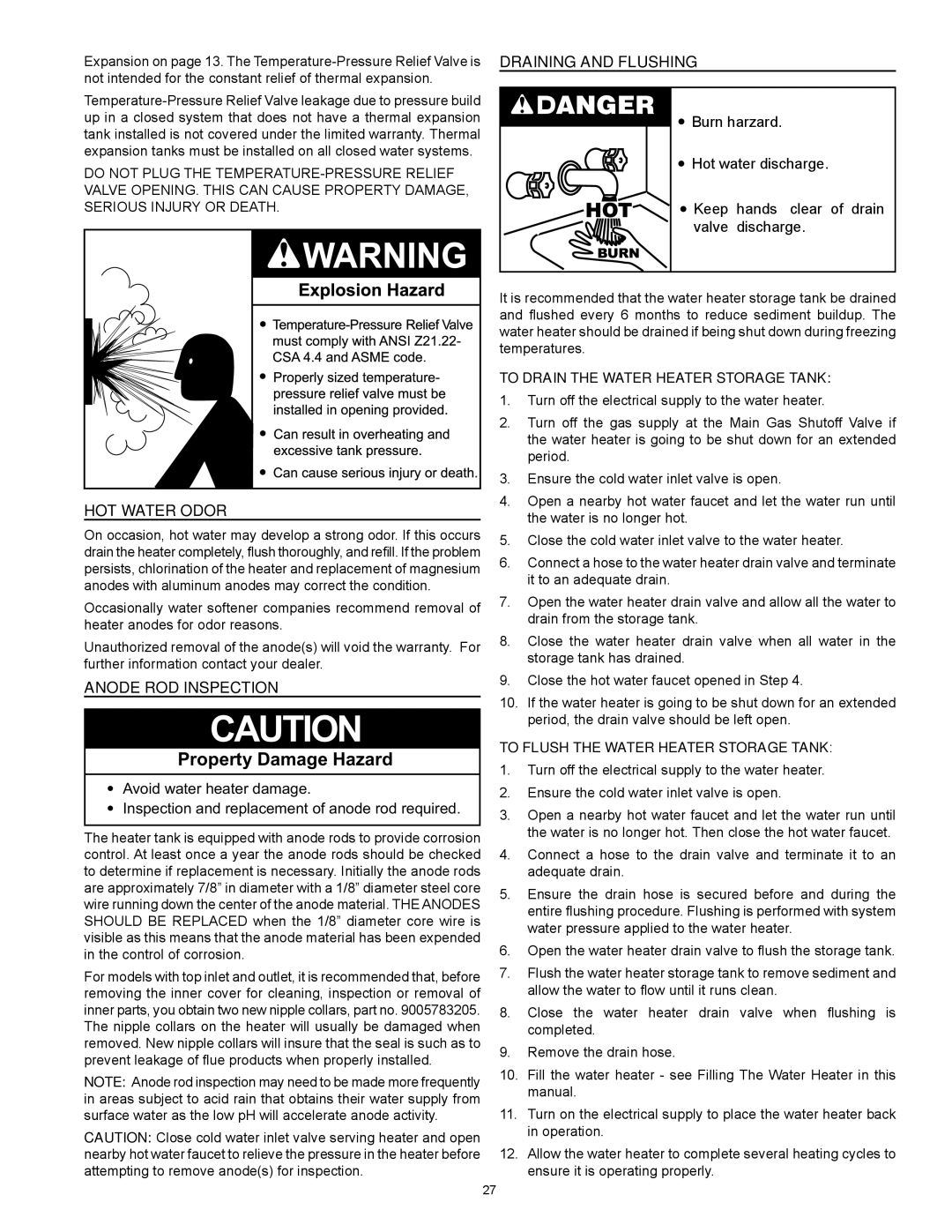D85500PE, D85500NE specifications
Reliance Water Heaters offers a diverse range of high-performance water heaters, with the D85500NE and D85500PE models standing out for their exceptional features and innovative technologies. Designed to meet the needs of modern households, these water heaters are engineered for efficiency, reliability, and ease of use.The D85500NE is a natural gas water heater that boasts a 50-gallon capacity, making it an excellent choice for medium to large households. One of its main features is the Energy Factor (EF) rating, which ensures efficient operation and reduces energy costs. With a recovery rate of approximately 41 gallons per hour, it's capable of delivering a steady supply of hot water without delays, ensuring that families can enjoy uninterrupted use during peak demands.
The D85500PE model, on the other hand, operates using propane, catering to households with propane systems. Like its natural gas counterpart, the D85500PE also has a 50-gallon capacity and delivers a comparable recovery rate. Both models feature a glass-lined tank, providing corrosion resistance and extending the lifespan of the water heater. This protective lining is crucial for maintaining water quality and ensuring durability over time.
In terms of technology, both the D85500NE and D85500PE are equipped with advanced thermostat and burner systems that allow for precise temperature control. The integrated piezo ignition allows for easy start-up, enabling users to ignite the burner with a simple push of a button. Additionally, the water heaters are designed with safety features such as a pressure relief valve, which prevents excessive pressure build-up.
Another notable characteristic of these models is their user-friendly accessibility. Maintenance access is made simple with installation features that enable straightforward servicing and repairs. The compact design of the units also allows for versatile installation options, whether in a basement, garage, or utility closet.
Finally, both the D85500NE and D85500PE are backed by a solid warranty, providing peace of mind for consumers. With their combination of efficiency, reliability, and advanced features, these water heaters from Reliance Water Heaters are an outstanding choice for anyone looking to enhance their home’s hot water system.

